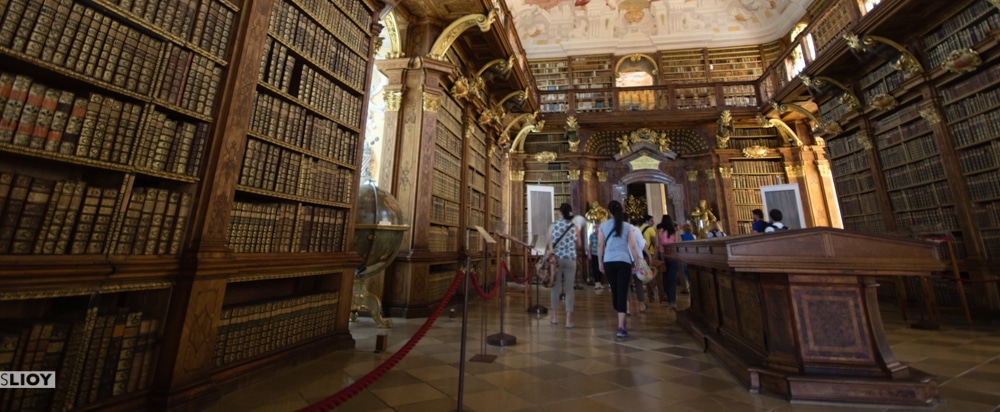Austria’s Benedictine Melk Abbey
Lest you think Austria’s Wachau Valley is all bike trips and vineyards and crumbling castles, it seems worth mentioning that there are quite a lot of ancient monastic orders that have set up shop in the region as well. There are around 50 historic abbeys in the country, 36 of which are still active today (and have been for hundreds of years), but by far the most popular among visitors is the Melk Abbey that sits on a bluff overlooking the Danube river about an hour by road from Vienna.
The Benedictine Melk Abbey was founded in 1089 when Leopold II of the House of Babenburg donated an old fortress to the Benedictine Order, though the current version is a renovation of the 1736 Baroque reconstruction. Despite damage during the Reformation, more damage during the Ottoman Invasion, and confiscation during the Anschluss period that preceded World War II, Melk Abbey is still one of the finest examples of monastic architecture in Austria. For many, the Abbey Chapel itself is the most impressive part of a visit to Melk.
To my mind, though, the Melk Abbey Library is where it’s at. For any Benedictine monastery, the Library is second in importance only to the Chapel and this is often reflected in the care put into design and maintenance of the space set aside for learning. At several of the monasteries I’ve visited in Europe the library is strictly a no-photo zone, and (always to my chagrin) this is the case at Melk Abbey as well. Tiny old women patrol the space with a fanatical zeal, swiftly alighting on any tourist daring enough to try to violate the rule. This, sadly, is one you’ll have to see for yourself as they quickly foiled most of my attempts for surreptitious shots.
The rest of the Abbey is fair game, however, the historic displays of religious relics and somewhat more modern art and all the other bits and bobs and chapels and study rooms that one would expect of a monastery that has been an active center of religious study and learning for over 1300 years. Of course, there’s also the religious art. Portraits and frescoes and entire salons built to be seen from one very specific spot in the center of the room. It’s hard not to take a ton of photos of it all, just to make up for the Library!
This is, again, one of the most popular Abbeys for tourists to visit anywhere in Austria so don’t expect a lot of time for quiet reflection on the beauty of religion. For a bit of art and architecture on a short trip out of Vienna, though? Austria’s Melk Abbey is just divine.
Essential information
From May to September, the Abbey is open from 9:00 to 17:00 and can visited individually or with a guide arranged-on site (English tours at 10:55 and 14:55). The cost without/with a guide is €7.70/€9.50.
From October to April, the Abbey is open only to guided tours, which are organized at 11:00 and 14:00. Make sure to check the Abbey website for the most up-to-date times before you visit. The price for these are also €9.50.
Getting There
Trains leave about every half hour for the one-hour trip from Vienna’s Westbanhof to the town of Melk.
Tickets cost around €20 per person each way.On the way back to Vienna, you can also take a boat along the Wachau Valley to Krems (€23.70) and the train from there back to the city. If you decide to do this, check the DDSG Boat schedule to make sure you arrive in time to catch their infrequent departures.
Staying in Melk
If you’d rather make an extended trip to Melk Abbey rather than visit as a day trip, there are both hotels and hostels in and around the village of Melk.
I visited the BenedictineMelk Abbey while working as a photographer with GetYourGuide on their Wachau and Danube Valleys Bus Tour. Especially if you plan to take a guided tour at the Abbey and then the Danube boat cruise, this may be worth your while as the price difference is negligible and it simplifies the need to deal with transport schedules en route.









